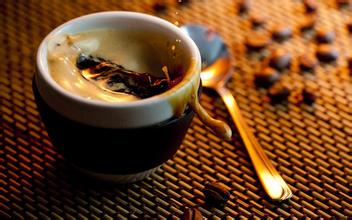Introduction to the regional treatment method for the flavor description of Colombian rose summer coffee beans and the characteristics of varieties
Introduction to the regional treatment method for the flavor description of Colombian rose summer coffee beans and the characteristics of varieties
In 1931, it was exported to Kenya in obscurity from Geisha Mountain Mountain in southwestern Ethiopia, wandered to Tanzania and Costa Rica, was transplanted to Panama in the 1960s, and then went through nearly half a century before it became a blockbuster, beating the victorious armies of Bourbon, Kaddura, Kaduai and Tibika to win the first prize of the Panamanian National Treasure Bean Cup Test Competition in 2005, 2006 and 2007. In 2007, the International famous Bean Cup Test sponsored by the American Fine Coffee Association (SCAA) won the championship again, and the bidding price was sold at US $130 per pound, setting a record for the highest price in the history of competition beans. It is reported that the later Panamanian national treasure bean competition will be divided into two groups: Rose Summer and non-Rose Summer, so as not to be robbed of the brilliance of other varieties by Rose Summer. Rosa is a member of the Tibika family, but it became famous more than 70 years after leaving Ethiopia, and fulfilled the saying that Ethiopia is a treasure trove of Arabica genes. Giving a variety to go abroad is enough to stir up trouble in the coffee market.
On the third day after baking, the author, together with Pei Daxing and two friends, conducted a cup test on Colombian Gesha coffee in Wangjing, Beijing. There are three types of coffee: one is a sample of Gesha baked in Colombia, and the other two are two batches of Colombian Gesha baked by the author in Beijing, each with three cups and the standard of SCAA is 5 cups.
Grind into coffee particles:
Smell the incense after breaking the residue:
To remove the scum:
Begin to taste:
Record at any time:
Summing up the test records of the four cups, it is concluded that the first place is the same batch of Gaixia baked by the author in Beijing and baked in Colombia.
Colombian Gesha coffee brewed by hand after the cup test:
Colombian Gesa Coffee features lively and bright acidity, rich aromas of flowers and fruit, medium thickness, balanced and supple taste and a long, sweet finish.

Important Notice :
前街咖啡 FrontStreet Coffee has moved to new addredd:
FrontStreet Coffee Address: 315,Donghua East Road,GuangZhou
Tel:020 38364473
- Prev

Description of roasting degree and Flavor of Tarazhu Coffee beans in Costa Rica
Costa Rica Tarazu coffee bean roasting degree flavor description taste manor production area introduces that there are many excellent producing areas in Costa Rica, while the high-quality producing areas in Costa Rica have a common understanding of quality, that is, ripe coffee fruits are required to ensure the production of high-quality coffee. Generally speaking, a large amount of water is used in the post-processing of picked coffee fruit.
- Next

Flavor description of Jamaican Blue Mountain Coffee Bean introduction to the varieties produced in the manor area
There are three varieties of coffee in Jamaica: blue Mountain Coffee (Jamaica Blue Mountain Coffee), of which Blue Mountain Coffee and Alpine Coffee are each divided into four grades. From top to bottom in terms of quality, NO.1, NO.2, NO.3 and PB,PB are round beans. According to CIB
Related
- Detailed explanation of Jadeite planting Land in Panamanian Jadeite Manor introduction to the grading system of Jadeite competitive bidding, Red bid, Green bid and Rose Summer
- Story of Coffee planting in Brenka region of Costa Rica Stonehenge Manor anaerobic heavy honey treatment of flavor mouth
- What's on the barrel of Blue Mountain Coffee beans?
- Can American coffee also pull flowers? How to use hot American style to pull out a good-looking pattern?
- Can you make a cold extract with coffee beans? What is the right proportion for cold-extracted coffee formula?
- Indonesian PWN Gold Mandrine Coffee Origin Features Flavor How to Chong? Mandolin coffee is American.
- A brief introduction to the flavor characteristics of Brazilian yellow bourbon coffee beans
- What is the effect of different water quality on the flavor of cold-extracted coffee? What kind of water is best for brewing coffee?
- Why do you think of Rose Summer whenever you mention Panamanian coffee?
- Introduction to the characteristics of authentic blue mountain coffee bean producing areas? What is the CIB Coffee Authority in Jamaica?

